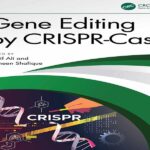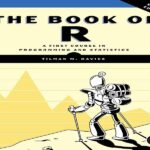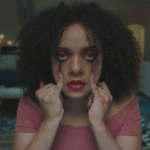- عنوان کتاب: Lean UX – Designing Great Products with Agile Teams
- نویسنده: Jeff Gothelf and Josh Seiden
- حوزه: مدیریت پروژه
- سال انتشار: 2023
- تعداد صفحه: 205
- زبان اصلی: انگلیسی
- نوع فایل: pdf
- حجم فایل: 4.08 مگابایت
بزرگترین دروغ در نرم افزار فاز دو است. اگر در 20 سال گذشته زمانی را صرف ساختن محصولات دیجیتالی کرده اید – صرف نظر از نقش خود – این دروغ را احساس کرده اید. شما ویژگی ها و ایده ها را برای مرحله بعدی کار کنار می گذارید و بعد از بین می روند—دیگر خبری از آنها نخواهد بود. بهعنوان طراح، صدها، اگر نگوییم هزاران، فریمهای سیمی و گردش کار در همین سطل ختم میشوند. اما آیا این ایده ها به دلیل ناقص بودن کنار گذاشته شدند؟ آیا ویژگی هایی که ارسال می شود در واقع اهداف مشتری و کسب و کار را برآورده می کند؟ یا اینکه وقت تیم به سادگی تمام شد؟ آنها هرگز به فاز دو نرسیدند. در The Lean Startup، اریک ریس چشم انداز خود را در مورد چگونگی اطمینان از اینکه ایده هایی که بیشترین ارزش را دارند، بیشترین منابع را دریافت می کنند، ارائه می دهد. روشی که Ries ترویج میکند بر آزمایش، تکرار سریع ایدهها و فرآیندهای تکاملی تکیه دارد. کل مفهوم فاز دو مبهم می شود. نقطه اتصال طراحی Lean Startup و تجربه کاربری (UX) – و همزیستی مفید همزیستی آنها – Lean UX است. اصول ناب زیربنای Lean Startup به سه طریق در Lean UX اعمال می شود. اول، آنها به ما کمک می کنند تا زباله ها را از فرآیند طراحی UX خود حذف کنیم. ما با دور شدن از موارد بسیار مستند، مکالمههایی با حداقل امکان ایجاد میکنیم. در عوض، یک فرآیند UX ناب فقط مصنوعات طراحی را ایجاد می کند که ما برای پیشبرد یادگیری تیم به آن نیاز داریم. دوم، اصول ناب ما را به سمت هماهنگ کردن “سیستم” خود متشکل از طراحان، توسعه دهندگان، مدیران محصول، مهندسین تضمین کیفیت، بازاریابان، و دیگران در یک همکاری شفاف و متقابل هدایت می کند که غیرطراحان را وارد فرآیند طراحی ما می کند. آخرین و شاید مهمترین تغییر ذهنیتی است که از اتخاذ یک مدل مبتنی بر آزمایش به دست میآوریم. به جای تکیه بر یک طراح قهرمان برای ارائه بهترین راه حل از یک دیدگاه واحد، ما از آزمایش و اندازه گیری سریع استفاده می کنیم تا به سرعت یاد بگیریم که ایده های ما چقدر به اهدافمان می رسد (یا نه). در تمام این موارد، نقش طراح شروع به تکامل به سمت تسهیل طراحی می کند – و با آن ما مجموعه جدیدی از مسئولیت ها را بر عهده می گیریم. علاوه بر Lean Startup، Lean UX دو پایه دیگر نیز دارد: Design Thinking و Agile Development Philosophies. تفکر طراحی به ما کمک می کند تا دامنه کار خود را فراتر از رابط ها و مصنوعات گسترش دهیم. تفکر طراحی به سیستمها نگاه میکند و به ما کمک میکند ابزارهای طراحی را برای مشکلات گستردهتر به کار ببریم. این امر بر همکاری، تکرار، ساختن و همدلی به عنوان هسته اصلی حل مسئله متکی است. Agile توسعه نرمافزار را روی چرخههای کوتاهتر متمرکز میکند، ارزش را به طور منظم و یادگیری مداوم ارائه میکند. به دنبال دریافت سریع ایده ها (اغلب به عنوان نرم افزار کار) به مشتریان، نحوه دریافت این ایده ها و سازگاری مکرر با یادگیری های جدید در طول مسیر است. Lean UX از این پایه ها برای شکستن بن بست بین سرعت Agile و نیاز به طراحی در چرخه عمر توسعه محصول استفاده می کند. اگر برای فهمیدن اینکه طراحی UX چگونه میتواند در محیطهای چابک کار کند، تلاش کردهاید، Lean UX پاسخی است. UX ناب موانعی را که طراحان نرم افزار را از نیازهای واقعی کسب و کار از یک سو و پیاده سازی واقعی از سوی دیگر جدا نگه داشته است، از بین می برد. Lean UX نه تنها طراحان را به میز می آورد، بلکه شرکای ما در تجارت و فناوری را به تخته سفید می آورد تا با ما بر روی بهترین راه حل ها به صورت مداوم کار کنند. جف زمانی مشتری داروسازی بزرگی داشت که آژانسی را که در آن زمان در آن کار میکرد استخدام کرد تا پلتفرم تجارت الکترونیک خود را با هدف افزایش ۱۵ درصدی درآمد طراحی کند. جف طراح اصلی تعامل در تیم بود. جف و تیمش در خلاء دفتر خود، ماه ها را صرف تحقیق در مورد سیستم فعلی، زنجیره تامین، رقبا، مخاطبان هدف و سناریوهای استفاده متنی کردند. آنها در مورد شخصیت ها تحقیق کردند و مدل های استراتژیک را جمع آوری کردند. جف یک معماری اطلاعاتی جدید برای کاتالوگ محصولات طراحی کرد و تجربه خرید و تسویه حساب کاملاً جدیدی را ایجاد کرد.
The biggest lie in software is Phase Two. If you’ve spent any time building digital products in the past 20 years—regardless of your role—you’ve felt the sting of this lie. You set aside features and ideas for the next phase of work and then they are gone—never to be heard from again. As designers, we’ve had hundreds, if not thousands, of wireframes and workflows end up in this same bucket. But were these ideas abandoned because they were flawed? Did the features that shipped actually meet customer and business goals? Or did the team simply run out of time? They never got to Phase Two. In The Lean Startup, Eric Ries lays out his vision for how to ensure the ideas that have the most value get the most resources. The method Ries promotes relies on experimentation, rapid iterations of ideas, and evolutionary processes. The entire concept of Phase Two becomes moot. The junction of Lean Startup and User Experience (UX) design—and their symbiotically beneficial coexistence—is Lean UX. The Lean principles underlying Lean Startup apply to Lean UX in three ways. First, they help us remove waste from our UX design process. We create minimally viable conversations by moving away from heavily documented handoffs. Instead, a Lean UX process creates only the design artifacts we need to move the team’s learning forward. Second, Lean principles drive us to harmonize our “system” of designers, developers, product managers, quality assurance engineers, marketers, and others in a transparent, cross-functional collab- oration that brings nondesigners into our design process. Last, and perhaps most important, is the mindset shift we gain from adopting a model based on experimentation. Instead of relying on a hero designer to divine the best solution from a single point of view, we use rapid experimentation and measurement to learn quickly how well (or not) our ideas meet our goals. In all of this, the designer’s role begins to evolve toward design facilitation—and with that we take on a new set of responsibilities. Besides Lean Startup, Lean UX has two other foundations: Design Thinking and Agile development philosophies. Design Thinking helps us widen the scope of our work beyond interfaces and artifacts. Design Thinking looks at systems, and helps us apply design tools to broader problems. It relies on collaboration, iteration, making, and empathy as core to problem-solving. Agile refocuses software development on shorter cycles, delivering value regularly, and continuous learning. It seeks to get ideas (oftentimes as working software) to customers quickly, sense how these ideas are received, and to adjust frequently to new learning along the way. Lean UX uses these foundations to break the stalemate between the speed of Agile and the need for design in the product-development lifecycle. If you’ve struggled to figure out how UX design can work in agile environments, Lean UX is the answer. Lean UX breaks down the barriers that have kept software designers isolated from real business needs on the one hand and actual implementation on the other. Lean UX not only brings designers to the table, it brings our partners in business and technology to the whiteboard to work with us on the best solutions in an ongoing way. Jeff once had a large pharmaceutical client who hired the agency he worked for at the time to redesign their ecommerce platform with the goal of increasing revenues by 15 percent. Jeff was the lead interaction designer on the team. In the vacuum of their office, Jeff and his team spent months researching the current system, supply chain, competitors, target audience, and contextual use scenarios. They researched personas and assembled strategic models. Jeff designed a new information architecture for the product catalog and crafted a brand-new shopping and checkout experience.
این کتاب را میتوانید از لینک زیر بصورت رایگان دانلود کنید:
Download: Lean UX – Designing Great Products with Agile Teams



































نظرات کاربران